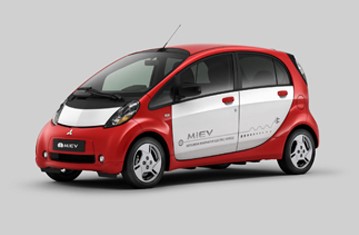Find more information in the General Comments section of the assessment
Find more information in the Rating Validity tab of the assessment
-
Adult Occupant
See More 73%
73% -
Child Occupant
See More 78%
78% -
Pedestrian
See More 48%
48% -
Safety Assist
See More 86%
86%
- Good
- Adequate
- Marginal
- Weak
- Poor
 Passenger
Passenger
 Driver
Driver
 Front Seat
Front Seat
 Car
Car
 Pole
Pole
- Good
- Adequate
- Marginal
- Weak
- Poor


Passenger
outboard
center
Fitted to the vehicle as standard
Not fitted to the test vehicle but available as option
Not Available
Based on dummy readings, the i-MiEV was awarded maximum points for its protection of the 3 year dummy in the dynamic tests. The passenger airbag can be disabled to allow a rearward facing child restraint to be used in that seating position. However, information provided to the driver regarding the status of the airbag is not sufficiently clear. A permanently attached label clearly warns of the dangers of using a rearward facing restraint in that seat without first disabling the airbag.
- Good
- Adequate
- Marginal
- Weak
- Poor

Head Impact 11.2 Pts
Pelvis Impact 0.0 Pts
Leg Impact 6.0 Pts
The bumper provided good protection and scored maximum points in Euro NCAP's tests. The front edge of the bonnet scored no points, offering poor protection to pedestrians' legs. The bonnet provided predominantly poor protection in those areas likely to be struck by the head of a child. However, the bonnet provided good protection in most of the areas where an adult's head would strike.
- Good
- Adequate
- Marginal
- Weak
- Poor
Electronic stability control is standard equipment on the i-MiEV, together with a seatbelt reminder system for the front and rear seats.
- Specifications
- Safety Equipment
- Videos
- Rating Validity
Specifications
Tested Model Mitsubishi i-MiEV, LHD
Body Type - 5 door hatchback
Year Of Publication 2011
Kerb Weight 1110kg
VIN From Which Rating Applies - applies to all i-MiEVs of the specification tested
Class City and Supermini
Safety Equipment
Note: Other equipment may be available on the vehicle but was not considered in the test year.
Fitted to the vehicle as standard
Fitted to the vehicle as option
Not fitted to the test vehicle but available as option
Not Available
Not Applicable
Videos
Rating Validity


Find more information in the General Comments section of the assessment
 Share
Share










Inspection of the i-MiEV after the frontal impact showed that several structures had reached the limit of their load-bearing capacity. The passenger compartment was judged to be unstable as the vehicle might not be able to withstand an impact at a higher speed. As a consequence, the score for the driver's chest was penalised and protection of this body region was rated as marginal. Most of the floor in the driver’s footwell was heavily distorted and this too was penalised, leading to a marginal rating for protection of the driver's feet and ankles. Structures in the dashboard posed a risk of injury to the knees and femurs of both the driver and passenger. In the side barrier impact, the driver's door opened and the car was penalised, although dummy readings showed protection was at least adequate. However, in the more severe side pole test, dummy readings of rib compression indicated poor protection of the chest. Protection against whiplash injury in the event of a rear collision was good. No problems were experienced with the high voltage electrical system which powers the vehicle: the battery was properly isolated from the bodyshell and was not damaged during the tests.